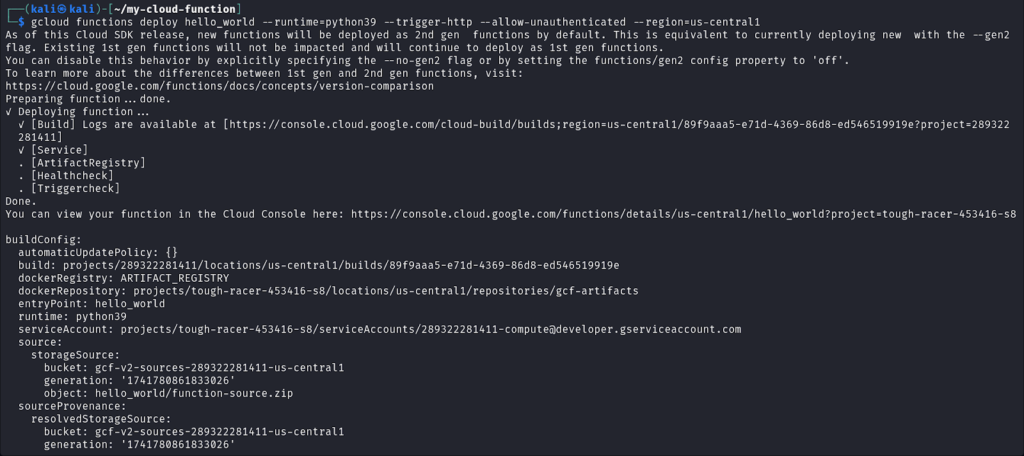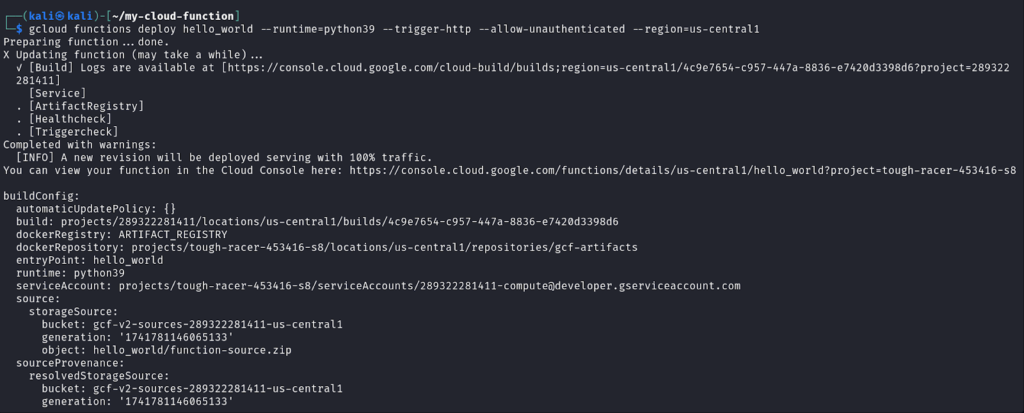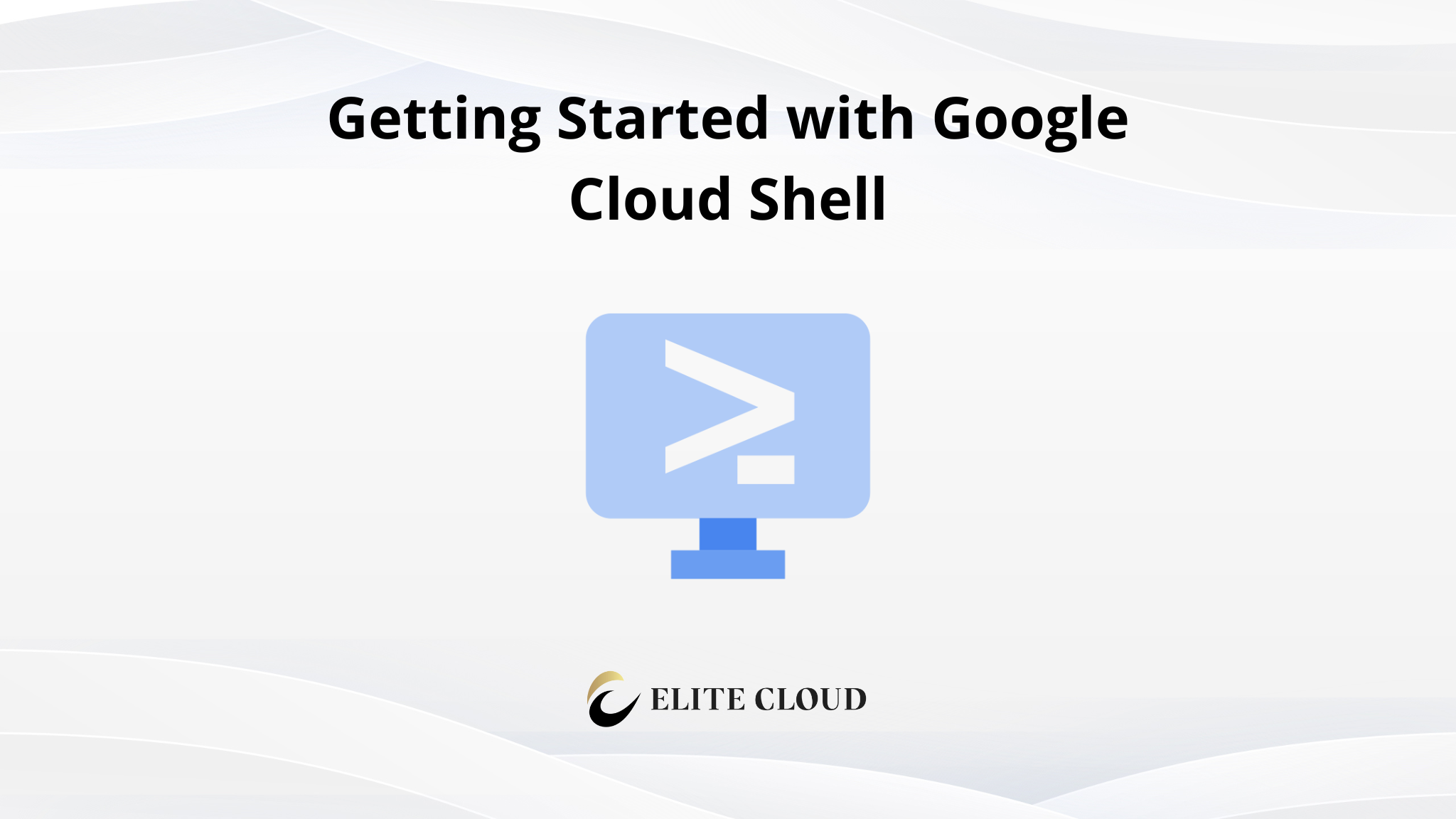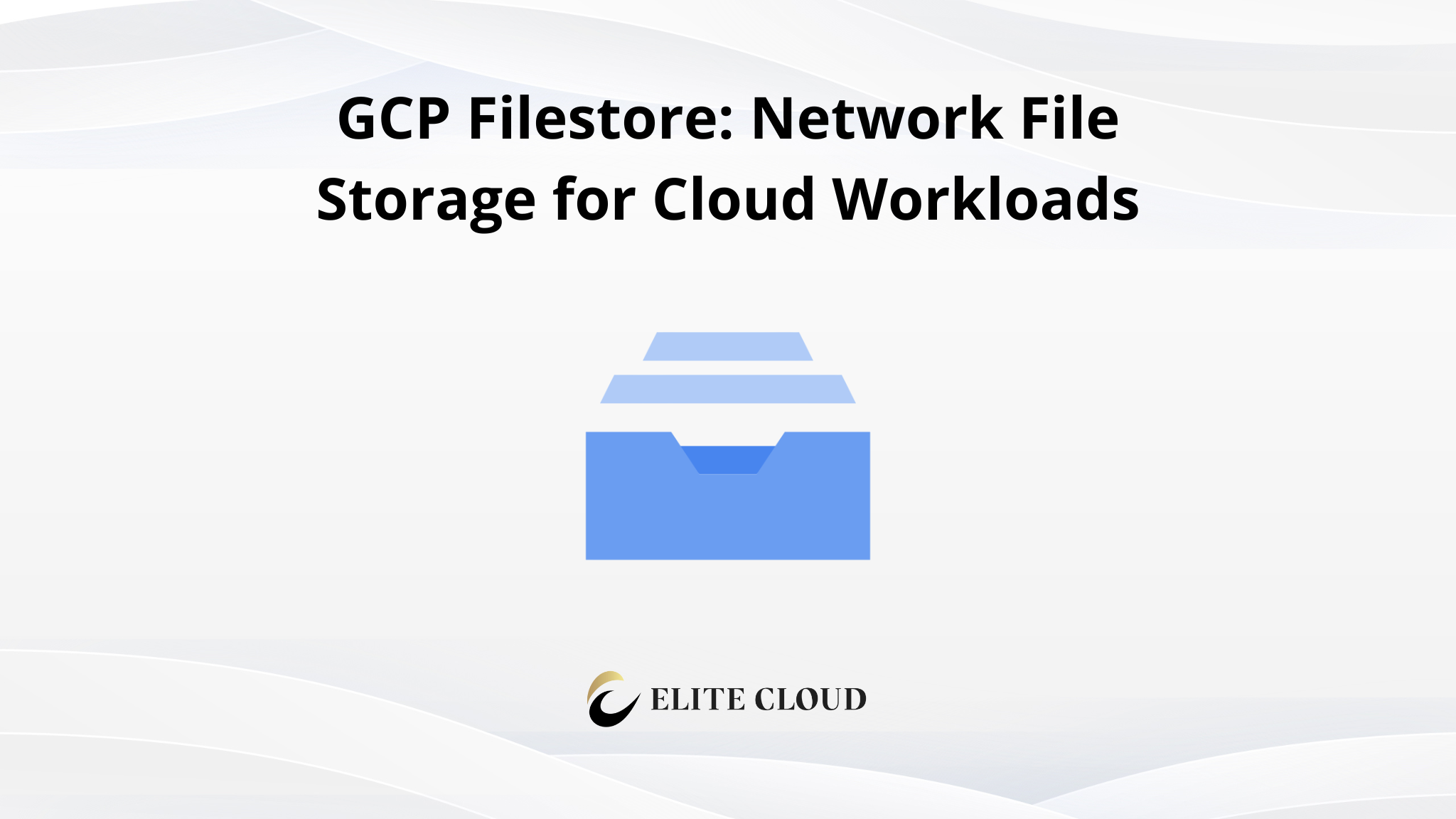Google Cloud Functions is a serverless compute solution that allows developers to execute code in response to events without managing infrastructure. Whether it’s processing files in Cloud Storage, responding to HTTP requests, or automating workflows, Cloud Functions can streamline tasks efficiently.
This guide will walk you through creating, deploying, and managing a simple HTTP-triggered Cloud Function using Python and the gcloud CLI. Attach screenshots after executing each command for better visualization.
Prerequisites
Before we begin, ensure you have the followings:
- A Google Cloud account
- The gcloud CLI installed and authenticated (gcloud auth login)
- A Google Cloud project set (gcloud config set project PROJECT_ID)
(Note: Installing the Google Cloud SDK was covered in our previous article, so we will not go over it here.)
Enabling Cloud Functions API
Before deploying your function, you need to enable the Cloud Functions API in your project. Run the command: `gcloud services enable cloudfunctions.googleapis.com` to enable Cloud Function API.

This step ensures that your project is ready to deploy and execute functions.
Understanding Cloud Functions Triggers
Google Cloud Functions is an event-driven computing service, meaning it executes code in response to specific triggers. These triggers define how and when the function runs, enabling seamless automation across different cloud services.
There are several types of triggers available, depending on the use case:
1. HTTP Trigger
With an HTTP trigger, Cloud Functions are executed whenever an HTTP request (GET, POST, etc.) is received. This makes it an ideal solution for:
- Building APIs and Webhooks – Cloud Functions can serve as lightweight APIs to handle web requests.
- Processing Form Submissions – A contact form on a website can trigger a function to store user data.
- Handling Automation Workflows – Other services can call the function via an HTTP request to execute automation tasks.
When an HTTP-triggered function is deployed, it generates a public URL that can be accessed via a browser, curl, or programmatically using HTTP clients.
2. Cloud Pub/Sub Trigger
Cloud Pub/Sub is a messaging service used for event-driven architecture. A Cloud Function can be triggered when a message is published to a Pub/Sub topic. This is useful for:
- Processing Event Streams – Real-time analytics, IoT sensor data processing, and financial transactions.
- Chaining Microservices – One service publishes an event, and a function processes it.
- Distributing Tasks – Multiple subscribers can process different parts of a workload asynchronously.
For example, an e-commerce system can publish an event whenever a new order is placed, and Cloud Functions can process the order, update inventory, and notify the customer.
3. Cloud Storage Trigger
A Cloud Function can be set to run when a file is uploaded, modified, or deleted in a Cloud Storage bucket. This is particularly useful for:
- Automatic Image Processing – When a user uploads an image, a function can resize, compress, or analyze it.
- Data Ingestion Pipelines – When a CSV file is uploaded, a function can parse and load it into BigQuery.
- Security and Compliance – When a sensitive file is deleted, a function can log the event for auditing purposes.
This type of trigger is widely used for media processing, backups, and automation of storage-related tasks.
4. Firestore Trigger
A Cloud Function can respond to changes in Google Firestore, a NoSQL database. It can be triggered when a document is:
- Created – When a new user registers, a function can send a welcome email.
- Updated – If a product price changes, a function can notify users.
- Deleted – If a record is deleted, a function can archive the data.
Firestore triggers are useful for real-time updates, background data processing, and synchronization between services.
Why We Are Using HTTP Trigger in This Guide
For this guide, we focus on HTTP-triggered Cloud Functions because they are the most straightforward to set up and can be accessed directly via a web browser or API call. HTTP functions serve as an excellent introduction to Cloud Functions before exploring more advanced event-driven triggers.
Creating a Sample Cloud Function
For demonstration purposes, we will deploy a simple Flask-like function that returns a basic message when accessed.
Create a new directory and navigate into it: `mkdir my-cloud-function && cd my-cloud-function`
Create a Python script (main.py) and define the function:“`
def hello_world(request):
return “Hello, Cloud Functions!”
“`

Create a requirements.txt file to specify dependencies:
“`
functions-framework==3.*
“`

This framework allows Cloud Functions to handle HTTP requests.
Deploying the Cloud Function
Now that we have our function set up, we can deploy it using: `gcloud functions deploy FUNCTION_NAME –runtime=python39 –trigger-http –allow-unauthenticated –region=REGION`

Replace:
- FUNCTION_NAME with a custom name for your function.
- REGION with the desired deployment region (e.g., us-central1).
Once deployed, Google Cloud will generate a public URL for the function.
Testing the Cloud Function
You can test the function immediately by running: `curl FUNCTION_URL`

Alternatively, open the URL in a browser to see the output.

Managing Cloud Functions
Viewing Deployed Functions
To list all functions in your project: `gcloud functions list`

Reading Function Logs
Cloud Logs allow you to monitor execution and debug issues: `gcloud functions logs read FUNCTION_NAME`

Updating the Cloud Function
If you modify main.py, redeploy the function with the same command: `gcloud functions deploy FUNCTION_NAME –runtime=python39 –trigger-http –allow-unauthenticated –region=REGION`

Here’s the updated function:

Scaling and Performance Considerations
By default, Cloud Functions scales automatically based on incoming requests. However, you can configure:
- Maximum instances to limit scaling (–max-instances=10)
- Timeout settings for long-running functions (–timeout=60s)
- Memory allocation to optimize execution (–memory=256MB)
Deleting the Cloud Function
If you no longer need the function, delete it using: `gcloud functions delete FUNCTION_NAME –region=REGION`

Need expert help with Google Cloud Functions?
As a Google Cloud Premier Partner, Elite Cloud provides expert consulting on:
- Serverless Optimization – Deploy highly scalable, event-driven applications with minimal overhead.
- Security Best Practices – Implement IAM controls, authentication, and monitoring for secure execution.
- Performance Tuning – Optimize cold starts, execution time, and resource allocation for efficiency.
📞 Talk to an Expert Now and streamline your serverless cloud strategy!
Final Takeaway
Google Cloud Functions is a powerful, serverless computing service that enables developers to automate workflows and respond to events with minimal setup.
Let serverless computing free your team to focus on innovation, not infrastructure. The next step is yours—launch that first function today.
FAQ
What are Google Cloud Functions?
Google Cloud Functions are serverless solutions. They let you run code in response to events without managing servers. This makes it easier for developers to automate tasks and build applications efficiently.
How do I create my first Cloud Function?
To create your first Cloud Function, you need a Google Cloud account. Enable necessary APIs and use the Google Cloud Console to write and deploy your function. A simple “Hello World” tutorial can guide you through this process.
What are common use cases for Cloud Functions?
Common use cases for Google Cloud Functions include automating scheduled data backups and processing form submissions. They can also create notification systems for business events. This helps streamline repetitive tasks and automate workflows.
How do triggers work in Google Cloud Functions?
Triggers initiate function execution based on specific events, such as HTTP requests or changes in Cloud Storage. This event-driven model helps in building responsive and efficient applications.
What are the security best practices for using Google Cloud Functions?
Security best practices include using IAM roles for authentication and managing secrets securely with Google’s Secret Manager. Implementing network security policies is also essential. It’s important to safeguard your functions from unauthorized access and vulnerabilities.




